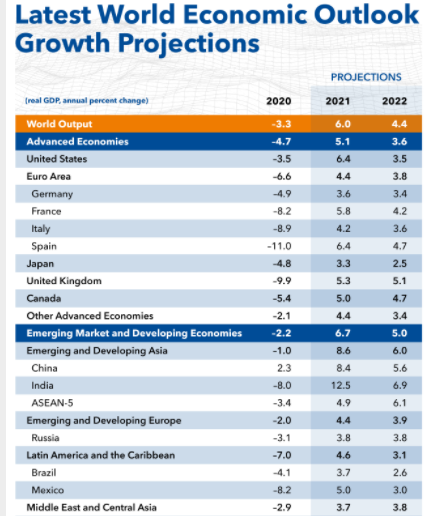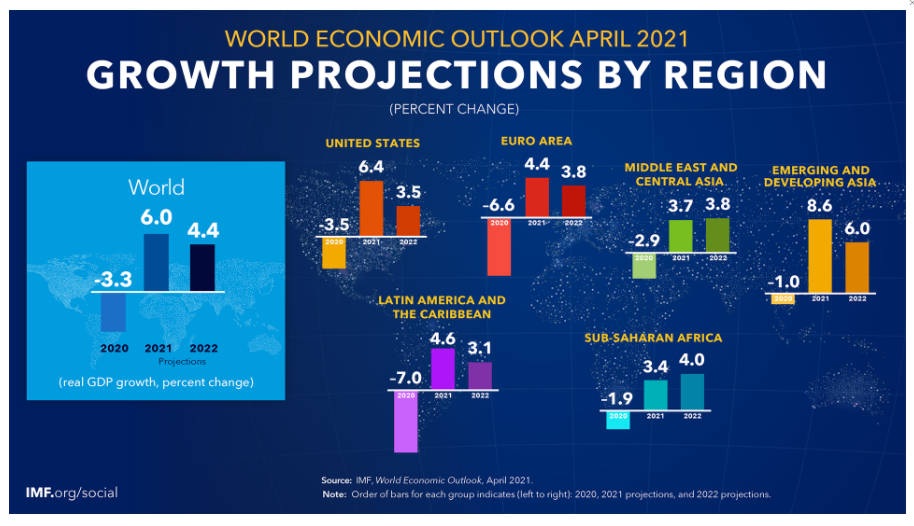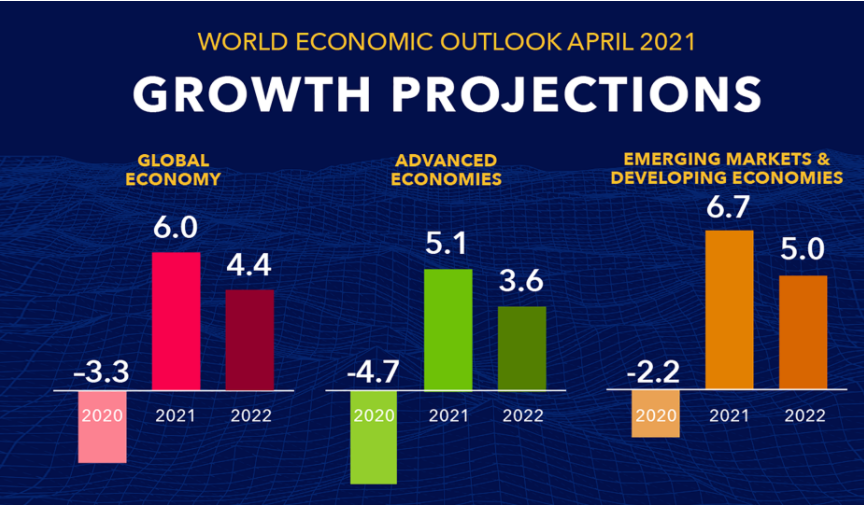The Advanced Economies Are Really Recovering From The Pandemic Recession
“Because a financial crisis was averted, medium-term losses are expected to be smaller than after the 2008 global financial crisis, at around 3 percent. However, unlike after the 2008 crisis, it is emerging markets and low-income countries that are expected to suffer greater scarring given their more limited policy space.” (IMF Blog, April 6, 2021)
The IMF has joined other economic forecasting groups in projecting a fairly speedy rebound in global growth this year.
Image Source: Unsplash
The IMF concludes that swift policy action worldwide, including $16 trillion in new fiscal spending mainly by the advanced economies, prevented a far worse global collapse in 2020.
Nonetheless, the pandemic reduced global output by an estimated 3.3% in 2020, the worst economic decline since the Great Depression. The global decline last year would have been three times worse had it not been for the $16 trillion of worldwide fiscal support.
The IMF expects the global recovery in 2021 and 2022 to be sparked by the two largest economies, the US and China.
And as the following table and charts indicate, the global economy is expected to expand by 6% this year after contracting 3.3% in 2020. The global recovery in 2022 should also be quite robust at 4.4%
The projections illustrate that the 2021 economic rebound is being fuelled by the wealthiest countries, particularly the United States, where the economy is now projected to expand by 6.4% this year following a contraction of 3.5% in 2020. As well, the unemployment rate in the United States is expected to fall from 8.1% in 2020 to 5.8% this year and to 4.1% in 2022.
Japan’s economy is projected to grow 3.3% this year, the UK’s 5.3 %, and Canada’s 5%.
As a side note, the Canadian projections for this year are far too low, as a recent Bank of Canada projection had the Canadian economy rebounding well over 6% in 2021.
The two largest emerging market economies are also expected to post robust GDP growth this year, with China’s economy projected to expand by 8.4% and India’s by 12.5%.
While China’s economy already exceeds its 2020 pre-pandemic level, many other countries are not expected to do so until 2023.
As these projections indicate, the recovery from the pandemic recession will be much weaker for many emerging markets and developing economies that are already suffering from slumps in tourism and weaker commodity exports. Many of these countries simply lacked the financial resources required to counter the pandemic downturn.
In closing, the huge fiscal stimulus in the US (i.e., $1.9 trillion), along with improved vaccine rollouts in the wealthier countries, has made economists far more confident about the world’s economic recovery this year. Unfortunately, the global economic recovery will likely result in major differences across countries and sectors.
Finally, it goes without saying that a high degree of uncertainty surrounds these economic projections. Among the main uncertainties is the future path of the pandemic and, of course, the effectiveness of the economic policy supports in the advanced economies.

(Click on image to enlarge)

(Click on image to enlarge)





